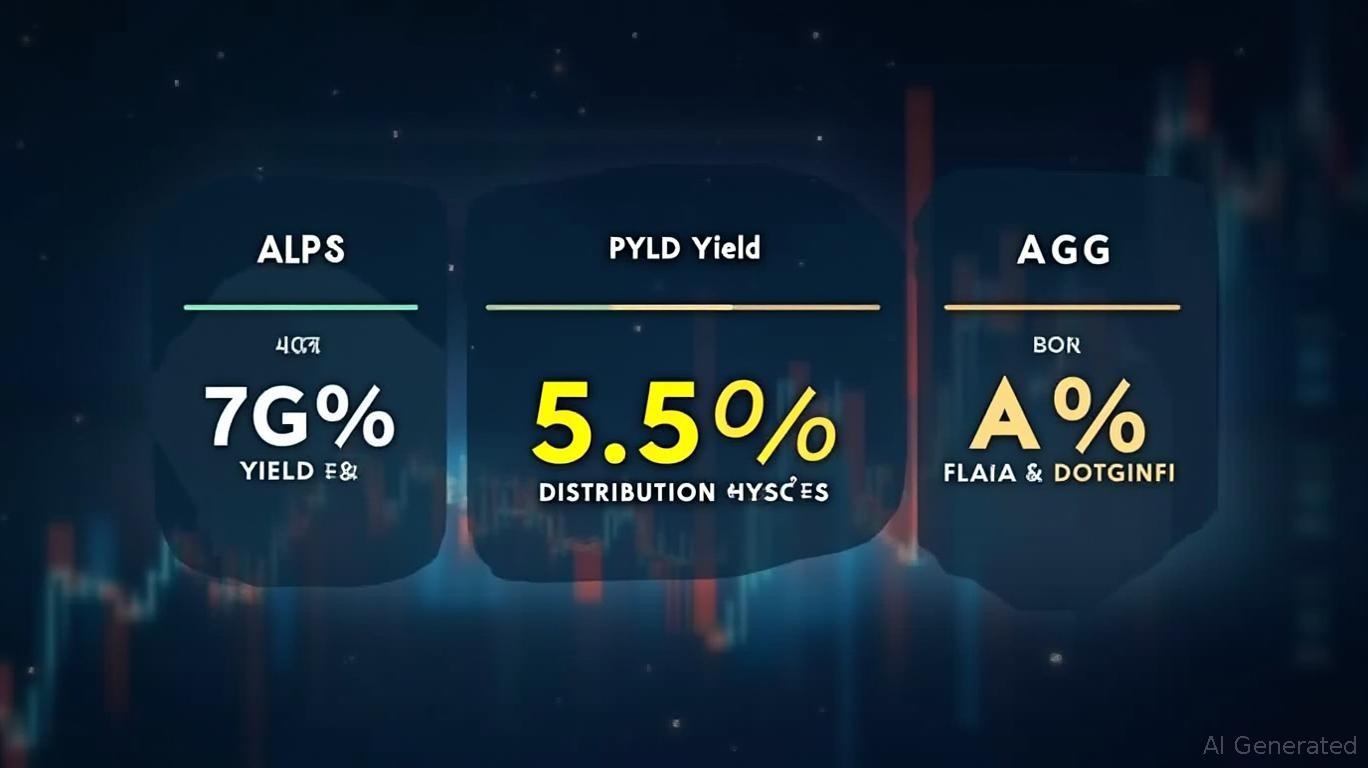PYLD ETF: Navigating Fixed Income Volatility with Active Management and Technical Momentum
The fixed income landscape in 2025 remains fraught with uncertainty, as central banks grapple with high interest rates and geopolitical tensions cloud economic forecasts. Amid this turbulence, PIMCO's Multisector Bond Active ETF (PYLD) has emerged as a standout performer, leveraging its active management strategy and robust technical signals to attract investor capital. With $1.6 billion in net inflows during Q1 2025 alone, PYLD's rise underscores its appeal in a market where yield-hungry investors prioritize both income and risk mitigation.
Strategic Positioning in Volatile Markets
PYLD's success stems from its deliberate departure from passive bond benchmarks like the Bloomberg Aggregate Bond Index (AGG). Unlike the AGG, which allocates nearly half its portfolio to government bonds,
reduces exposure to this sector (16.4% of assets) in favor of higher-yielding securitized fixed income, such as commercial mortgage-backed securities and asset-backed bonds, which make up 44.3% of its holdings. This shift allows the fund to capitalize on spreads in less liquid markets while maintaining high credit quality: 28.5% of its portfolio is rated triple-A, and 33.1% is double-A.The strategy has resonated with investors. In Q1 2025, active fixed income ETFs captured 53% of inflows into the category, even though they represent just 23% of total assets under management. PYLD's $1.6 billion in new assets during the quarter—equivalent to 37.4% of its AUM as of March 31—placed it as the second-largest active fixed income ETF by inflows. This surge reflects a broader shift toward active management, as investors seek agility in navigating rate hikes, inflation, and geopolitical risks.
Yield Differentiation: A Competitive Edge
PYLD's yield advantage is central to its appeal. At 5.95% as of April 2025, its distribution yield outpaces passive benchmarks such as the AGG (3.6%) and the iShares Core U.S. Aggregate Bond ETF (AGG) by over 200 basis points. This gap is widening as the Federal Reserve's prolonged rate-hike cycle compresses yields in traditional fixed income sectors.

The fund's ability to sustain this yield while maintaining high credit quality—avoiding the pitfalls of junk bonds—has solidified its reputation as a “sweet spot” investment. “PYLD's structure balances yield generation with risk management, a rare combination in today's market,” noted one analyst.
Technical Catalysts: Golden Star Signals and Market Momentum
PYLD's technical indicators further bolster its case for a buy/hold decision. In Q1 2025, the ETF triggered two Golden Star signals—a rare alignment of short- and long-term moving averages with price action—on May 14 (short-term) and June 10 (medium-term). These signals historically precede prolonged upward momentum.
As of June 12, PYLD holds buy signals across all time horizons, with its short-term moving average above the long-term average. The fund's price has also found support at $26.17 and $26.08, while resistance near $26.32 remains a key watchpoint.
However, caution is warranted: falling volume during recent price gains suggests some investor hesitation. A stop-loss at $25.23 is advisable to mitigate downside risk. Despite this, the MACD's buy signal and strong credit fundamentals argue for a medium-term bullish stance.
Expert Analysis: Active Management in Action
PYLD's performance is bolstered by PIMCO's seasoned team, led by Dan Ivascyn, CIO of Global Fixed Income. The fund's active approach—adjusting sector allocations in real time—has enabled it to outperform 70% of its active peers over the past year. With an expense ratio of just 0.55%, PYLD also offers cost efficiency compared to many actively managed bond funds.
Investment Considerations: Buy or Hold?
The case for PYLD hinges on its dual strengths: yield differentiation and technical momentum. Its Q1 inflows and Golden Star signals suggest sustained investor confidence, while its credit quality and active management provide a buffer against market shocks.
For income-focused investors, PYLD's 5.95% yield makes it a compelling alternative to cash or short-term Treasuries. However, the technical divergence in volume warrants monitoring; if prices continue to rise with declining volume, a reversal could follow.
Recommendation:
- Buy: For investors prioritizing yield and active risk management, PYLD offers a balanced entry point.
- Hold: Given its robust fundamentals, consider accumulating shares gradually, especially if prices dip toward support levels.
- Avoid: Short-term traders may face headwinds due to resistance at $26.32 and the volume divergence.
In a market where passive strategies struggle, PYLD's active agility and technical tailwinds position it as a top choice for fixed income investors navigating 2025's volatility.

Comments
No comments yet